Sounds just like my neighbor's Porsche.Its old. Used. Was rebuilt by the Importer to the US. Did not resolve any issues.
Rebuilt by a local guy and at the time added wide bandwidth transformers. That helped a lot, but there is still hum.
Shorting the input there is hum. its small. Pretty much close to I could live with it. But I would prefer it not be there. Its heard at the chair.
I forget if the hum is there when I remove the signal or driver tube. I would have to hook them up and try to confirm.
I know for sure there is power transformer injection of noise. I have done some shielding work around the power transformer (toroid) and heard a large reduction in noise. Not all.
If you don't lift the grounds, there is a high level of hum.
When you lift the grounds, there is an unacceptable level of hum. But it is much reduced.
Part of my thinking of putting it on a bread board. If I do, my local guy says it shaves hours upon hours of time for him to scope and test the equipment. My issue is its hard to find someone to tell you how to lay out the breadboard as I could create all sorts of issues by improper spacing and layout. But hey, I can't usually help myself so at some time I will take a stab at it. In the meantime, I am really waiting on Scott Sheaffer with Found Music to bring a Blade amp to Seattle for people to hear. That is what I will probably purchase. But some others look interesting to try.
FWIW, my local tech at one time said it was leaking voltage to ground. He wants $2000 to chase it down. Most of that is time to break the amp down based upon the poor design that does not allow servicing without dismantling the amp.
Rex
SET amp owners thread
- Thread starter bonzo75
- Start date
You are using an out of date browser. It may not display this or other websites correctly.
You should upgrade or use an alternative browser.
You should upgrade or use an alternative browser.
there are only 2 materials in the world that shield emf very reliably. tinplate or mu metal(very expensive)Its old. Used. Was rebuilt by the Importer to the US. Did not resolve any issues.
Rebuilt by a local guy and at the time added wide bandwidth transformers. That helped a lot, but there is still hum.
Shorting the input there is hum. its small. Pretty much close to I could live with it. But I would prefer it not be there. Its heard at the chair.
I forget if the hum is there when I remove the signal or driver tube. I would have to hook them up and try to confirm.
I know for sure there is power transformer injection of noise. I have done some shielding work around the power transformer (toroid) and heard a large reduction in noise. Not all.
If you don't lift the grounds, there is a high level of hum.
When you lift the grounds, there is an unacceptable level of hum. But it is much reduced.
Part of my thinking of putting it on a bread board. If I do, my local guy says it shaves hours upon hours of time for him to scope and test the equipment. My issue is its hard to find someone to tell you how to lay out the breadboard as I could create all sorts of issues by improper spacing and layout. But hey, I can't usually help myself so at some time I will take a stab at it. In the meantime, I am really waiting on Scott Sheaffer with Found Music to bring a Blade amp to Seattle for people to hear. That is what I will probably purchase. But some others look interesting to try.
FWIW, my local tech at one time said it was leaking voltage to ground. He wants $2000 to chase it down. Most of that is time to break the amp down based upon the poor design that does not allow servicing without dismantling the amp.
Rex
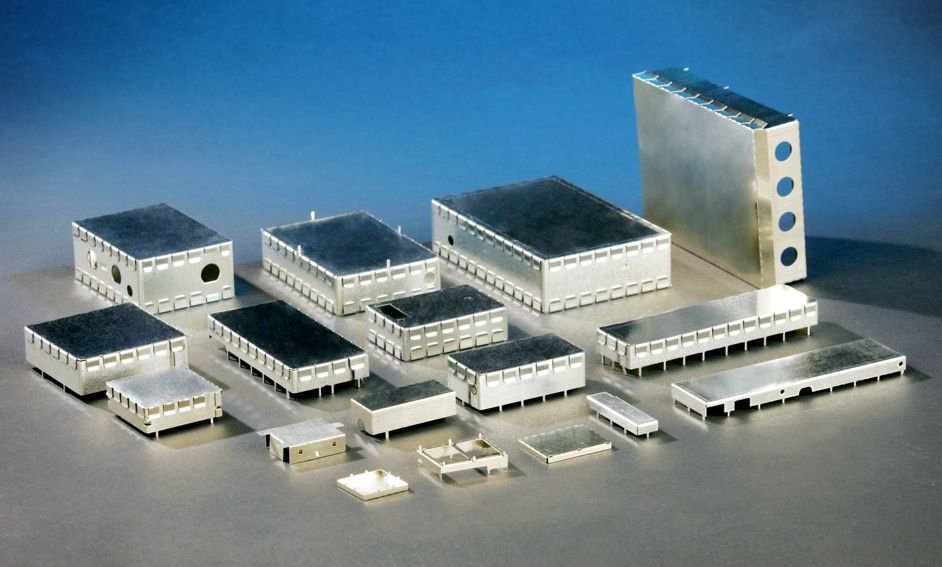
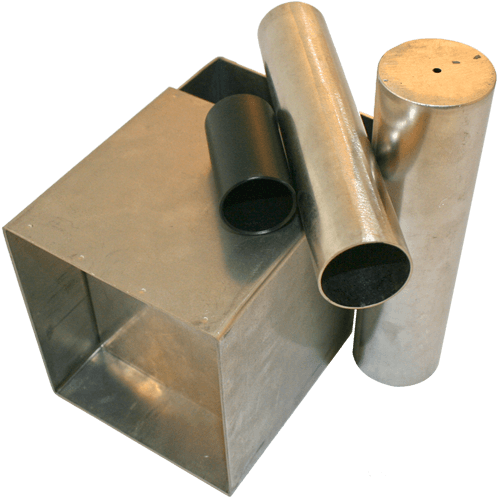
I think but after your explanation that the transformer is not the main cause. I would guess from afar that it is a ground fault. For example, a cold solder joint or cable connection, these faults are difficult to find, especially if you have to disassemble the entire amplifier. it costs time and nerves, don't give up sometimes it's a simple mistake that you don't see immediately
In principle I agree with you but I find so many of today's hi end systems brightly etched on the top, cumbersome at the low end and devoid of personality and life so at the present time I find the overall musicality of the Shindo a relief.
Not disagreeing. I like bespoke horns made out of vintage drivers, or for a lesser expensive off the shelf compromised solution something like Devore orangutans (which art Dudley loved with Shindo), Martin Logans, vintage tannoys. Horns universum and pnoe round up the modern horns but worth too many LPs.
When you want goosebumbs with your shindo,please listen to a lowther superacousta or acousta 124. they rarely appear on the used market. a perfect match the music creeps under your skin and ties you to the listening chair promised. ExsampleI see now, thank you for straightening me out on what you are up to. When you jump into some of these threads half way you miss the context of what people are saying.
Thank you also for your mentions on more neutral components. I havent heard most of them. I did think the sound in the Air Tight, Wolf Von Langa and Primary Control room at last years Munich Hi End show was excellent! At the end of the day it is all about the whole system.
I think your objective to get transparency to recordings is admirable. You are right they should not all sound the same and the system should be able to portray the differences. I would have to say that Shindo is guilty of imposing its lovely house sound on recordings so I understand why this colouration is not acceptable to you.
In principle I agree with you but I find so many of today's hi end systems brightly etched on the top, cumbersome at the low end and devoid of personality and life so at the present time I find the overall musicality of the Shindo a relief.
When you want goosebumbs with your shindo,please listen to a lowther superacousta or acousta 124. they rarely appear on the used market. a perfect match the music creeps under your skin and ties you to the listening chair promised. Exsample
slight variation
Post in thread 'SET amp owners thread'
https://www.whatsbestforum.com/threads/set-amp-owners-thread.27070/post-850274
Better? 300b mono,300b stereo, kt 88se in the darkslight variation
Post in thread 'SET amp owners thread'
https://www.whatsbestforum.com/threads/set-amp-owners-thread.27070/post-850274
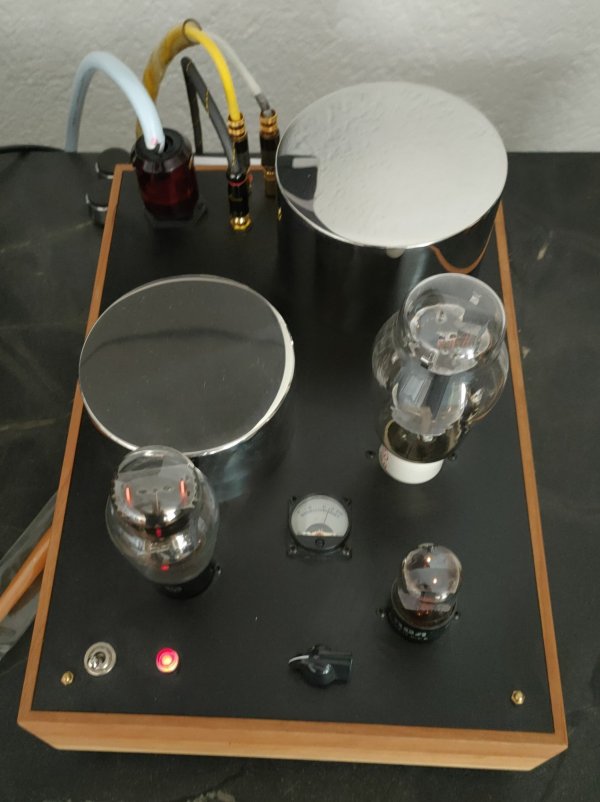
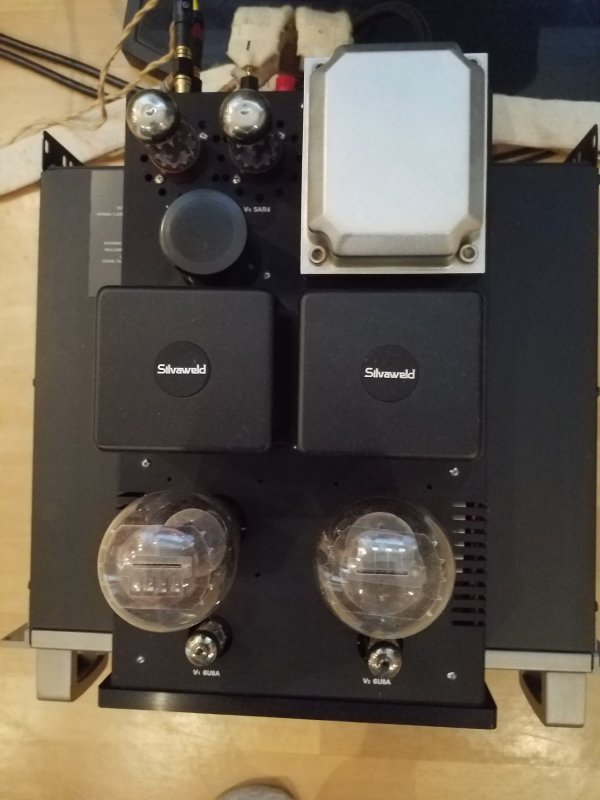

I know you like horns
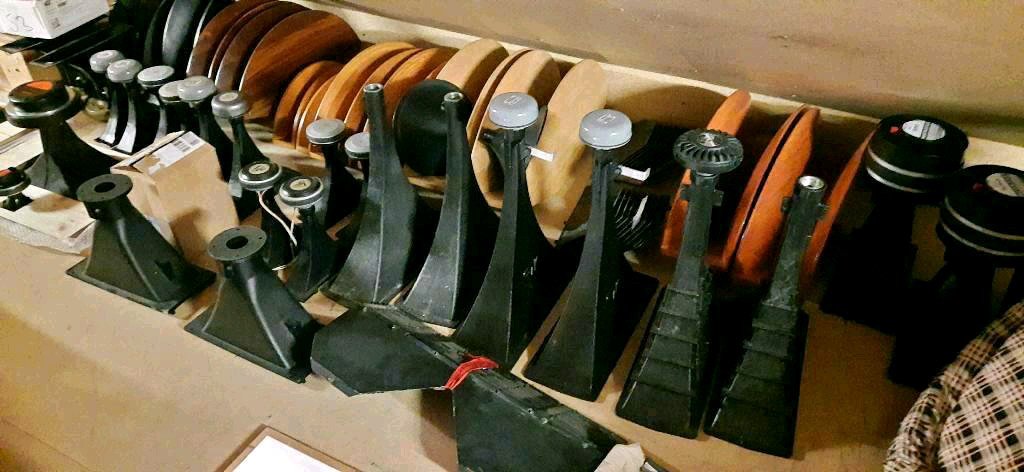
Yes it does. Its not SET sounding. But its also not PP either. It just plays music very well.Sure sounds nice at @jazdoc system
Mu metal had been added to my unit by Bob Hovland. I had to spin it and adjust it a little to get it to block properly. But really, I am sure there are other layout and power supply issues. Both amps react exactly the same so its not a cold solder in 1. Its poor design. I have fought this before with another amp. I could not rid the hum the manufacturer blamed on my house, my wiring, my room bla bla bla. I sent the amp the Atmasphere and he said the circuit board was not idea and voltage was being induced to the ground. He corrected the wiring and the amp is dead quiet. I am sure its the same issue. I had a tech 2 days ago look at the current schematic and he said the circuit is not making the noise. Its the layout.there are only 2 materials in the world that shield emf very reliably. tinplate or mu metal(very expensive)View attachment 109232View attachment 109233
I think but after your explanation that the transformer is not the main cause. I would guess from afar that it is a ground fault. For example, a cold solder joint or cable connection, these faults are difficult to find, especially if you have to disassemble the entire amplifier. it costs time and nerves, don't give up sometimes it's a simple mistake that you don't see immediately
So is it fine nowI sent the amp the Atmasphere and he said the circuit board was not idea and voltage was being induced to the ground. He corrected the wiring and the amp is dead quiet.
You have a ground loop. Its caused by the chassis ground to which the power cord is connected and the audio ground being the same thing. If you can separate the audio ground from the chassis, then you can put a resistance between the two so the audio ground floats at chassis (house wiring) ground potential. 50 Ohms works nicely. That will kill the ground loop.Its old. Used. Was rebuilt by the Importer to the US. Did not resolve any issues.
Rebuilt by a local guy and at the time added wide bandwidth transformers. That helped a lot, but there is still hum.
Shorting the input there is hum. its small. Pretty much close to I could live with it. But I would prefer it not be there. Its heard at the chair.
I forget if the hum is there when I remove the signal or driver tube. I would have to hook them up and try to confirm.
I know for sure there is power transformer injection of noise. I have done some shielding work around the power transformer (toroid) and heard a large reduction in noise. Not all.
If you don't lift the grounds, there is a high level of hum.
When you lift the grounds, there is an unacceptable level of hum. But it is much reduced.
Part of my thinking of putting it on a bread board. If I do, my local guy says it shaves hours upon hours of time for him to scope and test the equipment. My issue is its hard to find someone to tell you how to lay out the breadboard as I could create all sorts of issues by improper spacing and layout. But hey, I can't usually help myself so at some time I will take a stab at it. In the meantime, I am really waiting on Scott Sheaffer with Found Music to bring a Blade amp to Seattle for people to hear. That is what I will probably purchase. But some others look interesting to try.
FWIW, my local tech at one time said it was leaking voltage to ground. He wants $2000 to chase it down. Most of that is time to break the amp down based upon the poor design that does not allow servicing without dismantling the amp.
Rex
One thing I did in your other amp you sent to me was to make sure that for any given tube in the amp, the grid and cathode resistors went to ground using a common wire. That forces noise on the wire to be common mode thus reducing hum and buzz.
Maybe once these are landed in a more workable chassis you will look at them. I know you told me right from day one when they came to me, broken, to lick my wounds and move on. And you were right.You have a ground loop. Its caused by the chassis ground to which the power cord is connected and the audio ground being the same thing. If you can separate the audio ground from the chassis, then you can put a resistance between the two so the audio ground floats at chassis (house wiring) ground potential. 50 Ohms works nicely. That will kill the ground loop.
One thing I did in your other amp you sent to me was to make sure that for any given tube in the amp, the grid and cathode resistors went to ground using a common wire. That forces noise on the wire to be common mode thus reducing hum and buzz.
At this point, they are close. I know the remaining issue can be resolved.
please do the following, the device has a ground lift switch. continuity measurement with an ohmmeter a cable earthcontact (middle) power socket different cable rca socket outside (ground). If you press the switch, you should measure 0 ohms, press it again and you should see a higher value. if the wiring was done correctly. if it shows 0 ohms both times. then you have to look where the signal ground connection with housing ground.Maybe once these are landed in a more workable chassis you will look at them. I know you told me right from day one when they came to me, broken, to lick my wounds and move on. And you were right.
At this point, they are close. I know the remaining issue can be resolved.
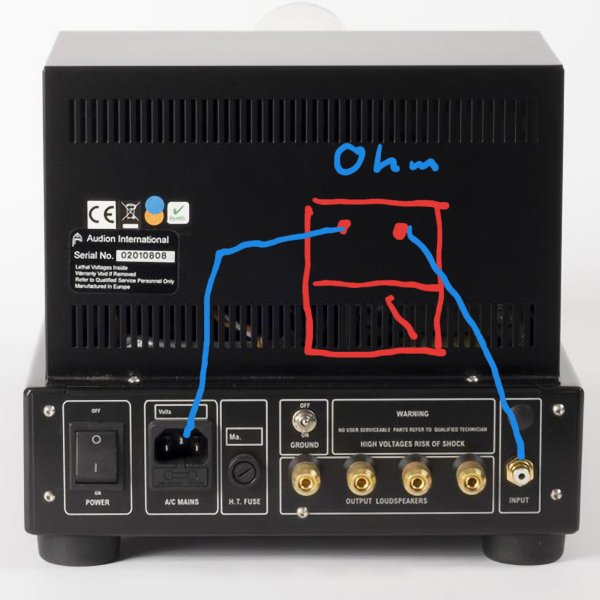
Y
Yes there is a cap and resistor in both amp attaching the signal ground to earth ground. I would be very disapointed if they failed in 2 different monoblocks and 3 separate, highly skilled amp builders missed it. Even the original owner knew the amps were defective from the factory and his tech could not fix it.please do the following, the device has a ground lift switch. continuity measurement with an ohmmeter a cable earthcontact (middle) power socket different cable rca socket outside (ground). If you press the switch, you should measure 0 ohms, press it again and you should see a higher value. if the wiring was done correctly. if it shows 0 ohms both times. then you have to look where the signal ground connection with housing ground.View attachment 109274
that is also done correctly to bridge the resistor with a capacitor. in the event of a fault, if AC voltage is applied to the housing as protection for the person touching it. The problem is if there is a small ripple voltage, it will also be transmitted to other devices that are connected to ground. this is how a ground loop is created. remove the capacitor for test purposes and listen.believe me, it's hard to imagine how things go sometimesY
Yes there is a cap and resistor in both amp attaching the signal ground to earth ground. I would be very disapointed if they failed in 2 different monoblocks and 3 separate, highly skilled amp builders missed it. Even the original owner knew the amps were defective from the factory and his tech could not fix it.
Ground lifts are a bad sign (often indicating that the designer does not know what's going on) when dealing with single-ended equipment. There's no justifiable argument for them- if the equipment is to meet EU directives or UL approval (in the US) and so on, the chassis must be grounded no if ands or buts.please do the following, the device has a ground lift switch. continuity measurement with an ohmmeter a cable earthcontact (middle) power socket different cable rca socket outside (ground). If you press the switch, you should measure 0 ohms, press it again and you should see a higher value. if the wiring was done correctly. if it shows 0 ohms both times. then you have to look where the signal ground connection with housing ground.
Grounding is an incredibly complex subject about which some very thick and dry tomes have been created over the years. But the solution in the 21st Century is very simple - as I outlined earlier. Not wanting to be the 'you kids get off my lawn!!' guy but really, how can this sort of thing still be going on this late in the game??
There is a kind of ground lift sometimes used in balanced line applications, where the ground is lifted on the interconnect cable. This is done because sometimes there can be such prodigious noise that it exceeds the common mode rejection ratio of the equipment involved; lifting this type of ground is acceptable since the equipment itself still has its safety ground.
@Kingrex You gotta get that thing fixed. I really doubt a different chassis will win you anything; FWIW our chassis are aluminum; they provide almost no shielding at audio frequencies yet no worries using the equipment on horn speakers. IOW a different chassis will be a waste of your funds- don't throw good money after bad.
of course, devices must be grounded. This is also guaranteed with a resistor that is bridged with the capacitor in terms of AC voltage.Ground lifts are a bad sign (often indicating that the designer does not know what's going on) when dealing with single-ended equipment. There's no justifiable argument for them- if the equipment is to meet EU directives or UL approval (in the US) and so on, the chassis must be grounded no if ands or buts.
Grounding is an incredibly complex subject about which some very thick and dry tomes have been created over the years. But the solution in the 21st Century is very simple - as I outlined earlier. Not wanting to be the 'you kids get off my lawn!!' guy but really, how can this sort of thing still be going on this late in the game??
There is a kind of ground lift sometimes used in balanced line applications, where the ground is lifted on the interconnect cable. This is done because sometimes there can be such prodigious noise that it exceeds the common mode rejection ratio of the equipment involved; lifting this type of ground is acceptable since the equipment itself still has its safety ground.
@Kingrex You gotta get that thing fixed. I really doubt a different chassis will win you anything; FWIW our chassis are aluminum; they provide almost no shielding at audio frequencies yet no worries using the equipment on horn speakers. IOW a different chassis will be a waste of your funds- don't throw good money after bad.
Even if the rectifier is defective and there is high AC voltage on the ground. so I don't believe in a ground loop. rather a defective circuit board or contact problems something similar. I just wanted to rule out such an error with the measurement.
for AC voltage, such a capacitor is no obstacle, so remove it for the test, then we are smarter.
Yes. there are so many books for correct grounding and build a tube amp that a libary is full.
I'm not sure what you are saying here.of course, devices must be grounded. This is also guaranteed with a resistor that is bridged with the capacitor in terms of AC voltage.
Even if the rectifier is defective and there is high AC voltage on the ground. so I don't believe in a ground loop. rather a defective circuit board or contact problems something similar. I just wanted to rule out such an error with the measurement.
for AC voltage, such a capacitor is no obstacle, so remove it for the test, then we are smarter.
Yes. there are so many books for correct grounding and build a tube amp that a libary is full.
So here's my answer to what I'm interpreting you meant. My apologies if my assumption is incorrect.
The chassis should be hardwired to the ground of the AC power cord. A resistor is really all that's needed to the audio ground and a capacitor does not hurt. I've found that grounding the chassis makes a considerable improvement in the noise floor of the amp, as opposed to floating the AC ground.
If the rectifier is bad (and by this I'm assuming the B+ supply) then there will not be a high AC voltage on the chassis. It may present a high current load to the power transformer though, which should blow the power fuse.
complete agreement. However, this capacitor can cause the groundlift to not work properly. AC ripple can penetrate or be transmitted across the signal ground over housing ground. So out with it. You won't believe what people are doing. With the right power fuse, I totally agree with you. You won't believe what can happen when highend people simply plug in bigger fuses. I don't want to say more on this subject.I'm not sure what you are saying here.
So here's my answer to what I'm interpreting you meant. My apologies if my assumption is incorrect.
The chassis should be hardwired to the ground of the AC power cord. A resistor is really all that's needed to the audio ground and a capacitor does not hurt. I've found that grounding the chassis makes a considerable improvement in the noise floor of the amp, as opposed to floating the AC ground.
If the rectifier is bad (and by this I'm assuming the B+ supply) then there will not be a high AC voltage on the chassis. It may present a high current load to the power transformer though, which should blow the power fuse.
I'm curious what kind of error was in the end.
Me too. I suspect though that Occam's Razor has already suggested the answer.I'm curious what kind of error was in the end.
Similar threads
- Replies
- 0
- Views
- 162
- Replies
- 3
- Views
- 576
- Replies
- 24
- Views
- 3K
| Steve Williams Site Founder | Site Owner | Administrator | Ron Resnick Site Owner | Administrator | Julian (The Fixer) Website Build | Marketing Managersing |
















